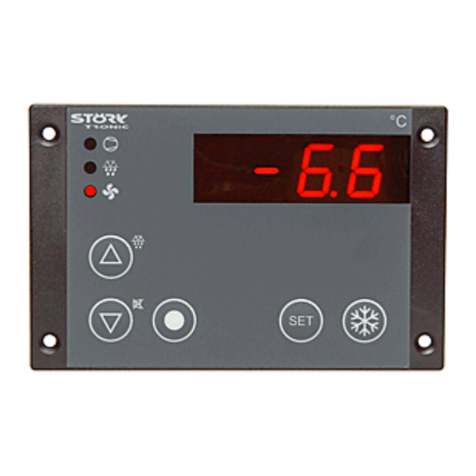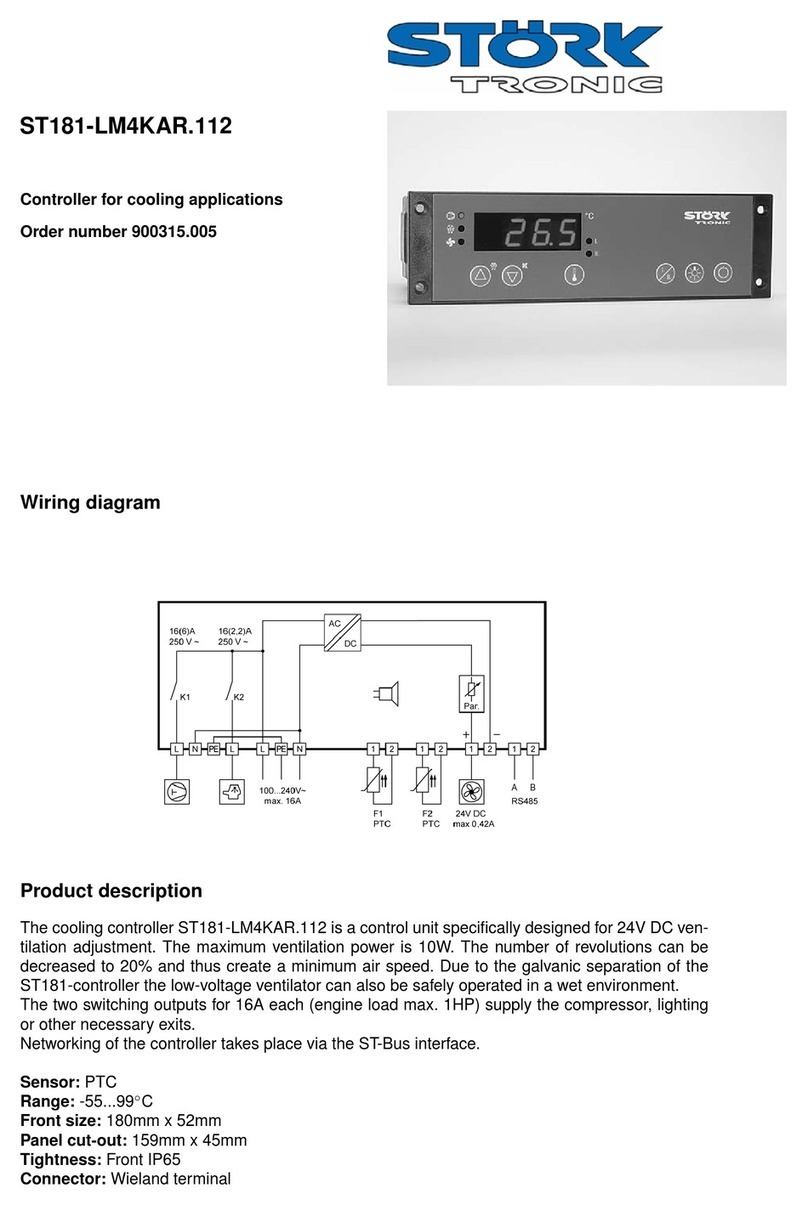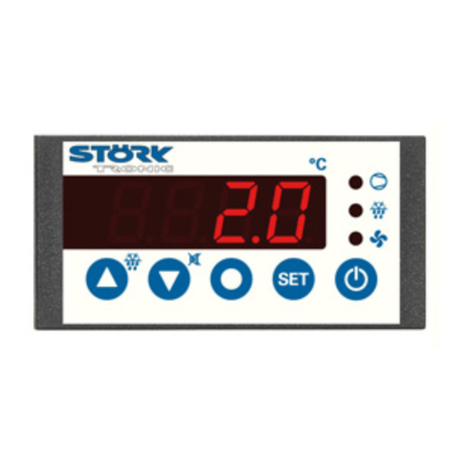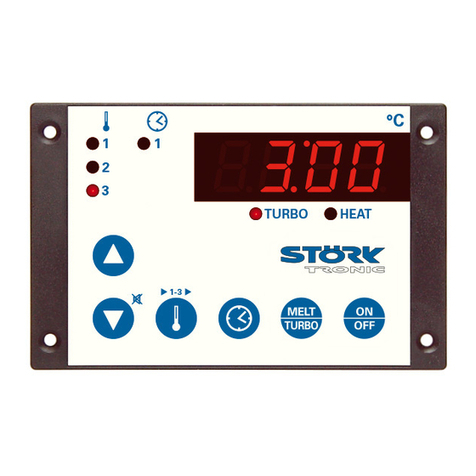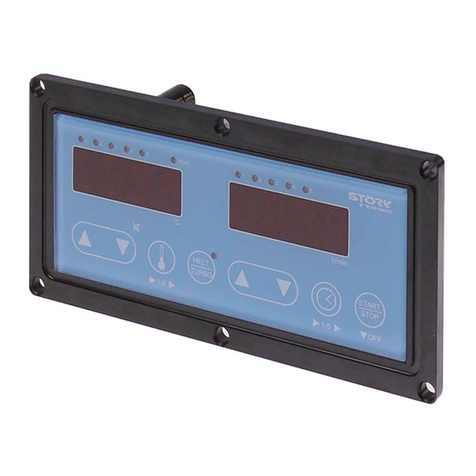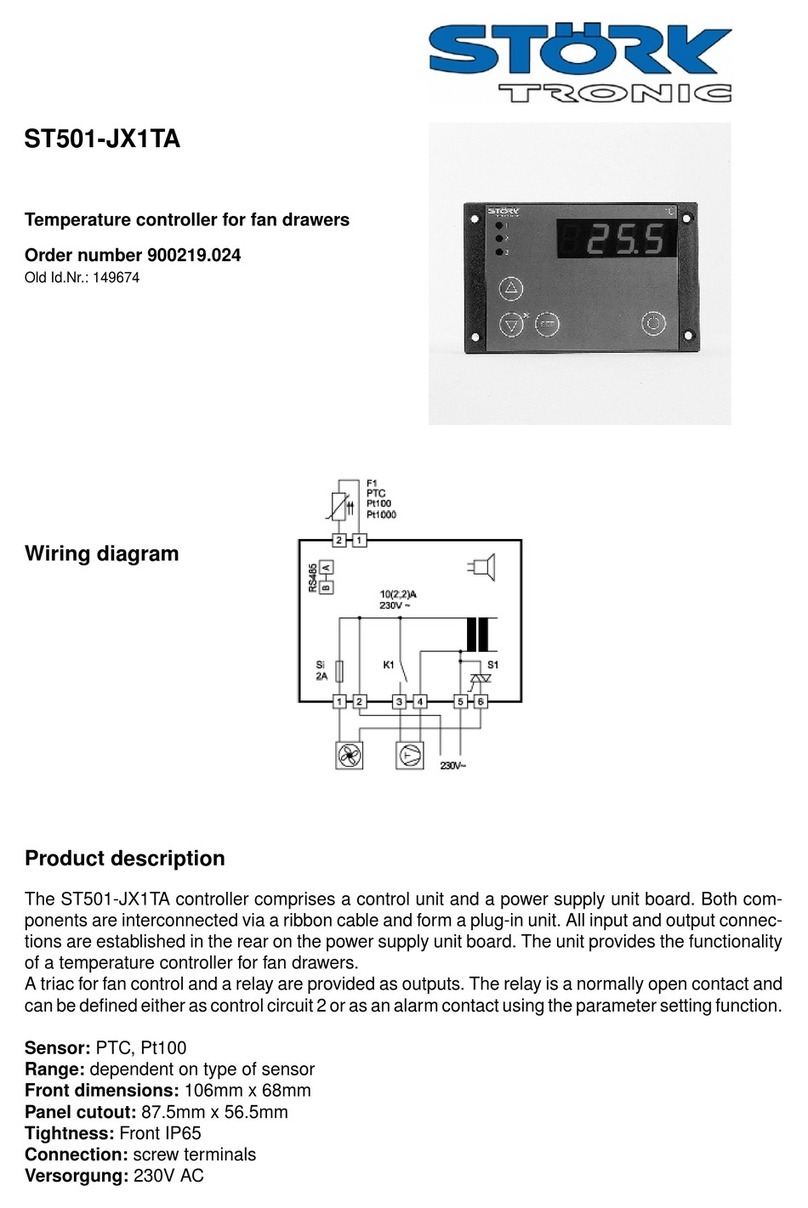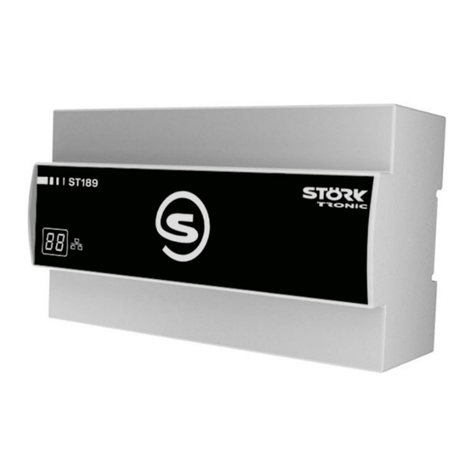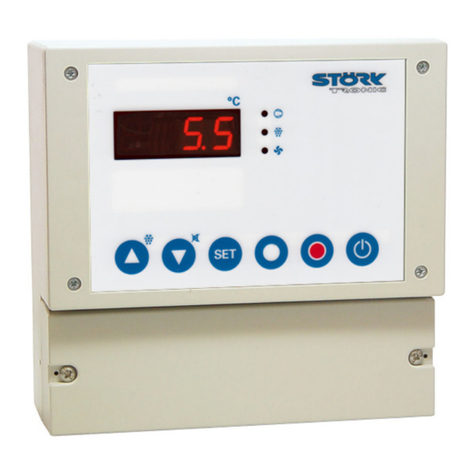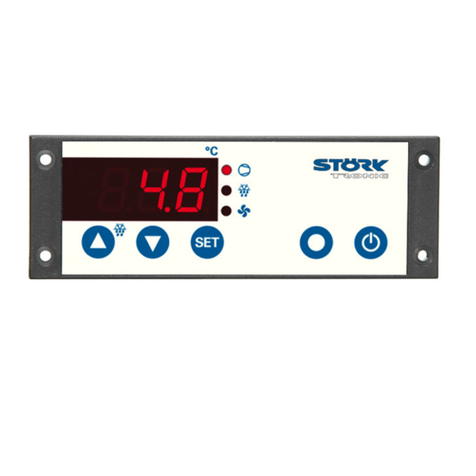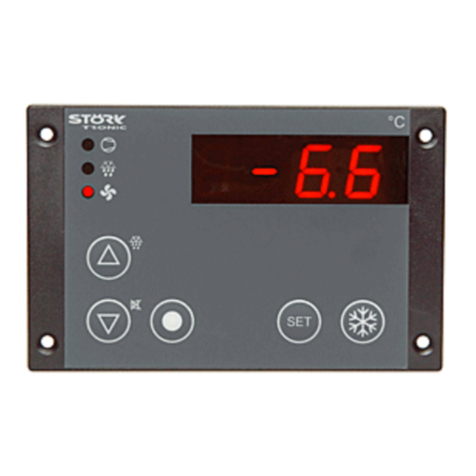
Selection/activation of PID programs "Pr.1...Pr.3"
To select or activate the PID programs, button "UP" must be pressed for approx. 2 seconds on
reference value level. The controller will then switch to program selection level, where you can set
a pointer to programs "Pr.1...Pr.3" using buttons "UP" and "DOWN". To select the program on the
display, press "SET" button for approx. 2 seconds. The display will be flashing indicating that the
program was selected successfully.
To return to the reference value level from "PR.1" position, simply press the "DOWN" button for
approx. 2 seconds or perform an Auto Reset, for which a shorter waiting time of approx. 10
seconds is implemented.
If the actual value reaches the limit defined via "P7", the controller will activate the selected
program automatically and maintain it until the actual value drops below the limit again. Above the
limit, programs "Pr.1...Pr.3" are not only selected in the way described above, but also activated
immediately.
Activation of PID program "Pr.4"
Above the limit value defined via "P7" you can use the quick-heating button ("turbo button") to
switch from the pre-selected/activated program "Pr.1...Pr.3" to "Pr.4" and back. Pre-selection of
"Pr.4" is not possible during the first heating phase. If "Pr.4" is active, parameter "A1" determines if
thermostat behavior or PID characteristic based on parameters "P20-P23" is active. Programs
"Pr.1...Pr.3" always have PID characteristic. The appliance is designed such that maximum heating
power is always guaranteed for program "PR.4", irrespective of parameterization.
Automatic return to slow heating
If, with program "Pr.1...Pr.4" activated, the actual temperature drops below the fixed limit of 50 °C,
the controller returns to slow heating mode automatically. In this case, as well as after "Mains
supply On", it is only possible to switch between "Pr.1" and slow heating. This switching option is
given both below and, after brief heating, above 50 °C. Activation of "Pr.2...Pr.4" is deleted, pre-
selection of "Pr.2" or "Pr.3" is maintained.
Function of indicator lamps
The upper lamp "H" indicates the switching state of the output contact. The lamp in the middle
"Slow heating" indicates that the slow heating phase is active. The bottom lamp "Quick heating"
lights up only if program "Pr.4" is active. Lamps "Slow heating" and "Quick heating" are always off
if one to the programs "Pr.1...Pr.3" are active.
Displaying the active program
Press buttons "ON/OFF" and "Turbo" at the same time to display the actually active program for
approx. 4 seconds. Since the individual functions assigned to the two buttons will be activated only
after a delay of approx. 2 seconds, unintentional activation of these functions is not possible if you
press the two buttons simultaneously, as the selected program will be displayed right away. This
display does not affect the control behavior or the controller settings. In slow heating mode, the
display will not respond if you press the buttons.
Hot fat operating hours counter and alarms
In internal counter registers the operating time with hot fat. The counter will be active only if the
actual value is above the temperature set in parameter "P25". Once the time set in parameter
"P26" has elapsed, a fat warning will be triggered. The regular display and the warning "OIL" will
be displayed alternately. In this state, the controller remains operational, parameters can be set,
too. Once the time set in parameter "P27" has elapsed, control will be blocked. Now, all functions
of the controller are disabled and control is deactivated. Only switching to "standby" mode is
possible now. To indicate this state, only the "OIL" message on the display will be flashing.
The fat warning message and control blocking must be activated via parameters "A2" and "A3". If
activated later, it must be noted that the hot fat operating time is registered regardless of the
activation and the alarm functions (warning/blocking) can be triggered immediately or a short time
after activation. The current fat operating time can be checked in parameter "P28". This value
